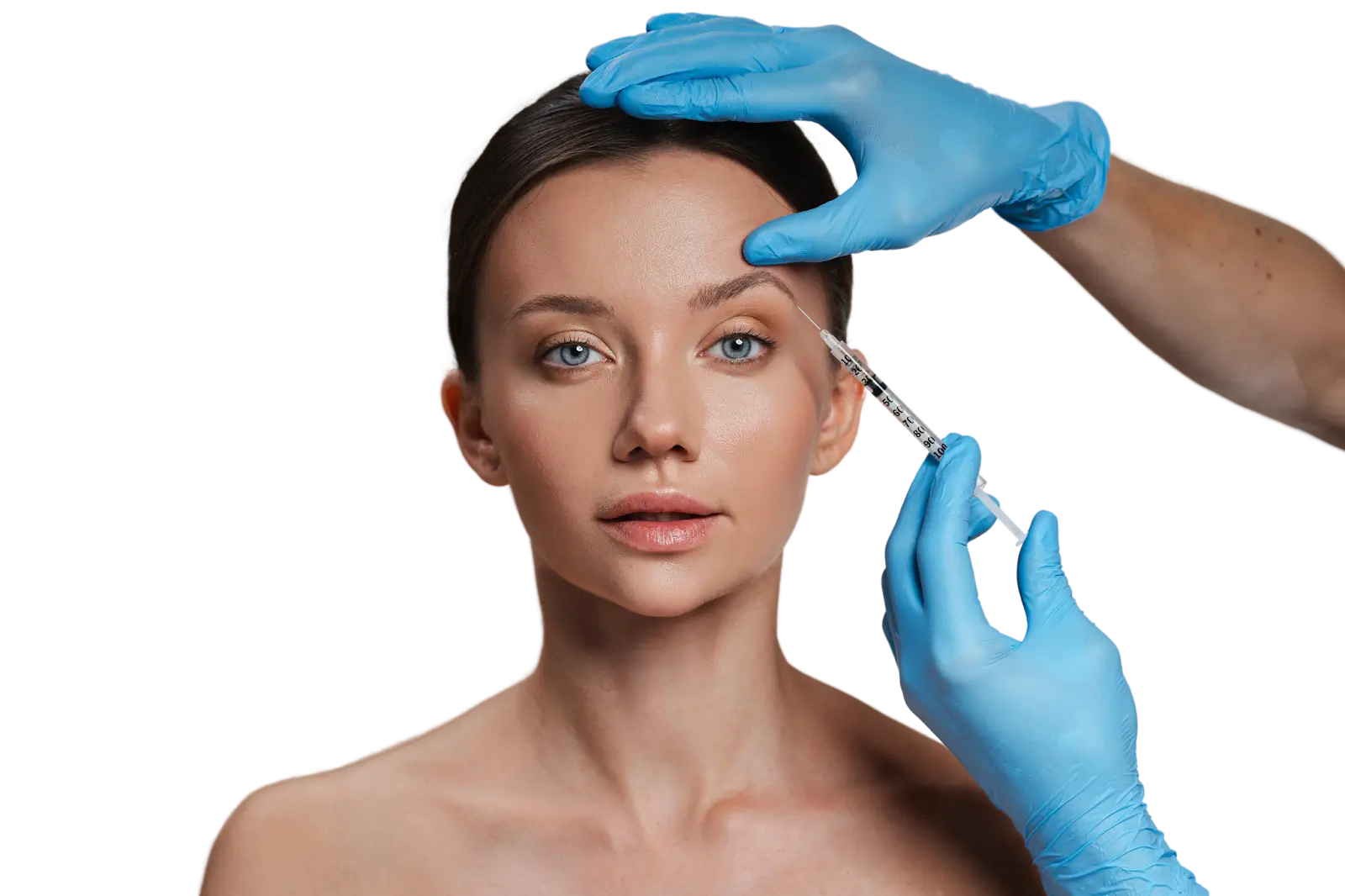
The global facial rejuvenation market is on track to surpass USD 25.11 billion by 2026, driven by a growing preference for minimally invasive procedures like botulinum toxin injections. These treatments are increasingly popular for their ability to smooth wrinkles, improve facial contours, and restore a youthful glow with minimal recovery time.
Among the most sought-after options are Innotox and Botox—both injectable treatments that work to relax facial muscles and smooth dynamic lines. While they share a common purpose, key differences in their formulation, storage requirements, and regulatory approvals have prompted many to weigh their safety, effectiveness, and suitability for individual needs.
In this article, we’ll dive into the key distinctions between Innotox and Botox, helping you understand how each treatment works, their benefits, longevity, and which one might be right for you.
Key Takeaways
- Innotox offers a ready-to-use liquid formulation, reducing preparation time and eliminating the need for reconstitution, while Botox requires careful reconstitution from a lyophilized powder.
- Innotox maintains stability at room temperature, making it easier to store and transport, while Botox needs refrigeration to preserve its potency.
- Both treatments have similar efficacy in reducing wrinkles, with Innotox providing faster onset (2–3 days) compared to Botox (5–7 days). Both treatments typically last 3–6 months.
- Innotox is synthetic and animal-free, reducing the risk of allergic reactions, while Botox contains human serum albumin, which may pose a risk for individuals with allergies.
- Botox has FDA approval and is supported by extensive clinical use, while Innotox has approval from the Korean Ministry of Food and Drug Safety (MFDS) but is not yet FDA-approved in the U.S.
- The choice between Innotox and Botox depends on factors like onset time, storage preferences, patient sensitivity, and practitioner expertise.
About: Doctor Medica is your trusted supplier of top-quality dermal fillers, viscosupplements, and more for your medical practice. We offer genuine products from leading brands at the lowest prices in the market. If you’re looking to order Innotox online for your practice, contact Doctor Medica today.
Formulation and Handling Differences: Innotox vs Botox

Innotox distinguishes itself with a ready-to-use liquid formulation, eliminating the need for reconstitution. This not only reduces preparation time but also minimizes potential dilution errors, leading to a more streamlined workflow for practitioners. The ready-to-use nature of Innotox makes it particularly convenient for busy clinics seeking to provide a faster and more efficient service.
In contrast, Botox is supplied as a lyophilized powder, which requires careful reconstitution with sterile saline before administration. This additional step introduces the possibility of variability in concentration, which can, in some cases, impact the consistency of results. The extra step may also increase the preparation time, making Botox less efficient in fast-paced settings.
Another notable difference lies in the storage requirements. Innotox maintains its stability at room temperature, making it easier to store and transport, particularly in areas where refrigeration is not readily available. Botox, however, requires refrigeration to maintain its potency. This can sometimes be a limiting factor in specific clinical environments, particularly in regions with logistical challenges.
Clinical Efficacy and Onset: Innotox vs Botox

Both Innotox and Botox are highly effective botulinum toxin treatments used for aesthetic enhancement. While they share many similarities in terms of clinical results, there are important differences in onset time, duration, and injection site performance.
Below is a side-by-side comparison to help patients and professionals make informed decisions regarding their treatment options:
| Criteria | Innotox | Botox |
| Form | Ready-to-use liquid; no need for dilution | Lyophilized powder; requires reconstitution before use |
| Onset of Results | 2–3 days post-injection; faster visible improvements | Usually takes 5–7 days to show effects |
| Duration of Effect | 3–6 months, with some studies suggesting slightly longer-lasting results | 3–6 months, depending on dosage and treatment area |
| Wrinkle Reduction Efficacy | Clinically proven to reduce fine lines and wrinkles | Clinically proven with long-term data supporting wrinkle reduction |
| Injection Sites Performance | Consistent results across facial zones and delicate areas like the under-eyes | Highly effective across standard zones, with widely documented performance |
While Botox has long been the gold standard in facial rejuvenation, Innotox offers a compelling alternative for those looking for quicker results and a simplified application process. Innotox injection sites have proven to yield consistent, natural-looking results, especially in more delicate areas like the under-eye region.
Both treatments offer effective, non-surgical solutions for wrinkle reduction, but personal preferences, such as onset time and the ease of application, may influence the decision-making process.
Safety Profiles and Adverse Events: Innotox vs Botox
Both Innotox and Botox are considered safe when administered by trained professionals at appropriate injection sites. While their overall safety profiles are quite similar, certain differences in formulation and clinical history may sway patient preference.
Common Side Effects
- Localized Reactions: Both Innotox and Botox can cause mild, localized side effects, such as pain, swelling, redness, or bruising at the injection site. These reactions are typically a natural response to the needle puncture and the introduction of botulinum toxin, and generally resolve within a few hours to a few days.
- Temporary Discomfort or Headaches: Some patients may experience headaches, heaviness, or pressure in the areas where treatment was administered. These sensations are usually mild and tend to dissipate without the need for medication.
- Mild Muscle Weakness or Drooping: In rare cases, mainly if the product spreads beyond the intended muscle, there may be temporary muscle weakness or drooping (e.g., eyelid ptosis). However, this is more likely due to improper injection techniques rather than the products themselves.
- Itching or Sensitivity: A small number of patients may experience itching, tenderness, or skin sensitivity in the treated area. These symptoms are typically harmless and usually resolve on their own.
Most side effects from both treatments are transient and self-limiting, disappearing within a few days post-treatment. To minimize discomfort, it is recommended to apply a cold compress and avoid vigorous physical activity for 24 hours.
Key Differences in Formulation
- Innotox: Free of human serum albumin, making it a fully synthetic and animal-free formulation. This may reduce the risk of allergic reactions for individuals with sensitivities.
- Botox: Contains human serum albumin, a stabilizer that is safe for most patients but could pose a risk for individuals with specific allergies or autoimmune conditions.
Regulatory Approvals and Market Availability: Innotox vs Botox
Botox is widely available and has FDA approval, making it a globally trusted treatment for both medical and cosmetic purposes. Its approval in numerous regions, alongside its extensive clinical history, gives practitioners and patients confidence in its reliability and consistency.
Innotox, while not yet FDA-approved, has received approval from the Korean Ministry of Food and Drug Safety (MFDS). It is currently available in select international markets and is gaining popularity, particularly in Asia.
Conclusion
Both Innotox and Botox provide highly effective solutions for wrinkle reduction and facial rejuvenation. Innotox stands out due to its liquid formulation and room temperature stability, making it an appealing choice for those seeking practical advantages and quicker results. Meanwhile, Botox’s long-standing FDA approval and extensive clinical history offer reassurance and confidence in its efficacy.
Ultimately, the choice between Innotox and Botox depends on individual goals, health profiles, and the expertise of the practitioner. Consultation with a licensed provider is essential to ensure the best treatment approach based on personal preferences and desired outcomes.
FAQs
1. What are the main differences between Innotox and Botox?
Innotox is a ready-to-use liquid that eliminates the need for reconstitution and can be stored at room temperature. Botox comes as a powder requiring dilution and must be refrigerated
2. Which treatment has a faster onset of action?
Innotox may show results within 2–3 days, while Botox typically takes 5–7 days to exhibit noticeable effects.
3. Are there differences in safety profiles between the two?
Both have similar safety profiles, but Innotox lacks human serum albumin, which potentially reduces the risk of allergic reactions.
4. Is Innotox FDA-approved?
As of now, Innotox is not FDA-approved, but it is approved by the Korean Ministry of Food and Drug Safety (MFDS) and is available in select international markets.
References
Petruzzi D. Facial rejuvenation market size worldwide from 2016-2026. Statista. Published February 22, 2024. https://www.statista.com/statistics/988827/facial-rejuvenation-revenue-global-market/
Liu Y, Mao R, Xiao M, Zhu W, Liu Y, Xiao H. Facial Rejuvenation: A Global Trend of Dermatological Procedures in the Last Decade. Plast Reconstr Surg Glob Open. 2024;12(6):e5801. Published 2024 Jun 4. doi:10.1097/GOX.0000000000005801
Fedok FG. Advances in minimally invasive facial rejuvenation. Curr Opin Otolaryngol Head Neck Surg. 2008;16(4):359-368. doi:10.1097/MOO.0b013e3283031c7d
Related Articles
Joanna Carr
Benefits of Filorga’s Top Products for a Youthful Appearance
Discover the youthful benefits of Filorga's top products at Doctor Medica. Achieve a radiant and rejuvenated appearance today.
Joanna Carr
Side Effects of Remicade – The Complete List
Discover the full spectrum of Remicade (infliximab) side effects, from mild reactions like headache and rash to serious risks including infections, he...
Joanna Carr
Fortelis Vs Juvederm: Similarities And Differences Explained
Interested in learning more about The Similarities And Differences of Fortelis Vs Juvederm Explained? Browse Doctor Medica's comprehensive archive of ...


